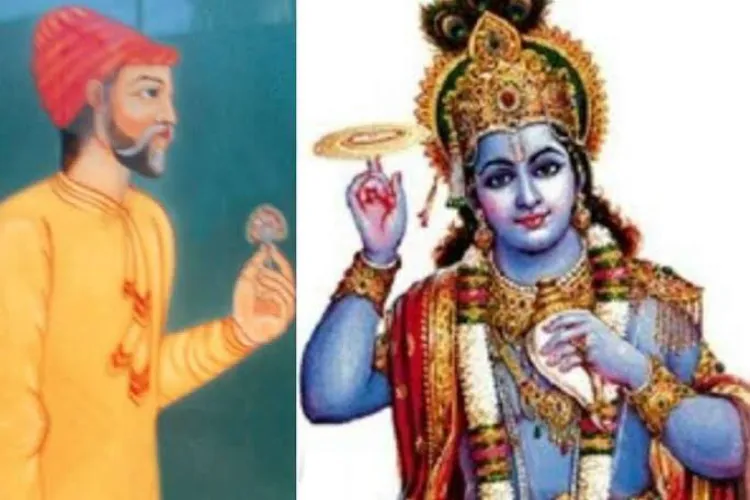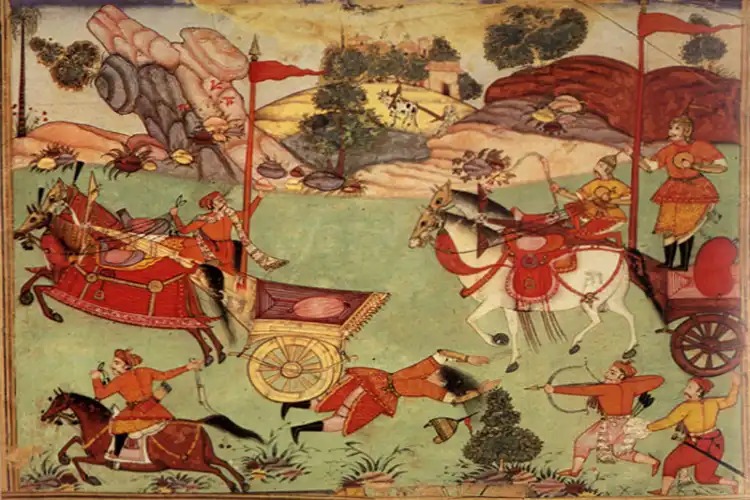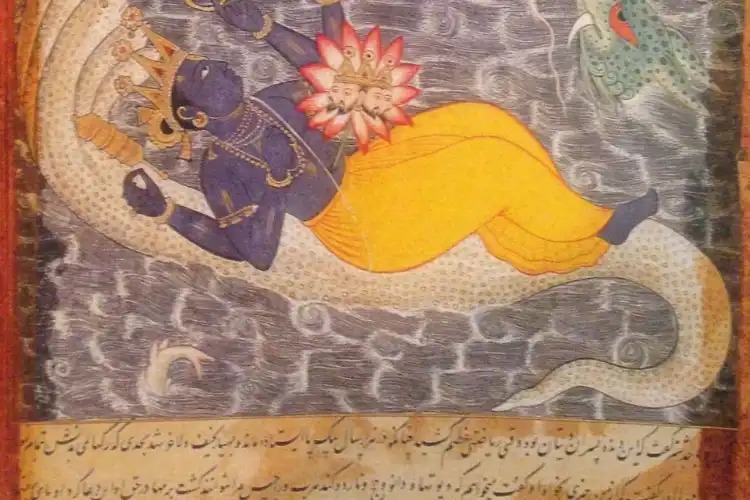
Ghaus Siwani/New Delhi
The love story of Radha and Krishna is famous. Krishna is believed to be an avatar and his story is repeated in private and public gatherings. His teachings to his friend Arjuna on the battlefield of Kurukshetra is encapsulated in ‘Bhagavat Gita’. Gita is one of the most pragmatic guides to life and its struggles. Interestingly, Krishna Bhakti is not limited to Hindus; Muslim poets, writers, Kings, and philosophers respect him and have written about him.
The story of Krishna emanates from the ancient battle epic 'Mahabharata' which was originally written in Sanskrit. Its first translation was in Persian, and that was done at a time when the Quran was yet to be translated from Arabic. Big attention was paid to the translation of the Mahabharata into Persian.
The translated versions of Mahabharata, the story of the battle between the cousins Kauravas and the Pandavas, have been available since ancient times; the battle is described in proverbial terms. During the war, Krishna gave his services as a charioteer to Arjuna. When Arjuna faced the dilemma of fighting against his relatives Krishna gave him profound bits of advice explaining why he must not hesistate in the line of righteousness as against the evil personified by the Pandvas and how his action is in the larger good of the world.

An il;lustrations on the Battle scene from Mahabharta
Mahabharata is a sacred book for the Hindus and since Akbar believed in religious tolerance and inclusiveness and knew that keeping his Hindu subjects happy is a good practice to perpetuate his rule, he must have translated this book for political purposes. It’s also a possibility that the stories in Persian Mahabharata about the women of the harem and the banquet of the nobles, were made up to please the nobles, who were not familiar with Sanskrit and the cultural moorings of Mahabharata.
During Akbar's time, the books translated from Sanskrit into Persian included the Mahabharata, the Ramayana and the Upanishads.
Researcher, Sheikh Muhammad Ikram, writes: “Akbar patronized literature. Translate books from Sanskrit, Arabic, Turkish, Greek to Persian. Among the books translated from Sanskrit, Ramayana, Mahabharata, Bhagavad Gita, Atharveda and the mathematical book Lilavati are famous.”
In all some 15 books have been translated from Sanskrit into Persian by the order of Akbar. The Persian translation of the Mahabharata was done by expert calligraphers and painters; the latter were involved in making beautiful and captivating illustrations for each chapter.
In 1582, Akbar ordered Badayuni to translate the Epic. He had finished it in four years. Badayuni was assisted by a group of calligraphers and painters who embellished it. The first copy was illustrated by Mushfiq, later many copies were made, one of which was later found in the possession of Raja Swai Man Singh II of Jaipur. This is safely displayed in the City Palace Museum, Jaipur even today.
Akbar sent a copy to Abdur Rahim Khan Khanan and other courtiers and nobles were also sent copies of Razamnama as gifts.
Khan-i-Khanan was a learned and friendly person and his library contained all the important books, so the king also sent a copy of each book for safekeeping. Khan-e-Khanan was a broad-minded Muslim and had a special devotion to Shri Krishna, which he expressed in his Hindi poems. Rahim studied Mahabharata, Ramayana, and other Hindu religious books.

The Mahabharata, the story of the battle between the Kauravas and the Pandavas, has been prevalent in the vernacular since ancient times, and the battle is described as proverbial. During the war, Shri Krishna performed the service of Arjuna's charioteer and in the meantime, Krishna gave many bits of advice to Arjuna including the Bhagavad Gita. did
Since Akbar believed in religious tolerance and wanted to keep Hindus happy, he must have translated this book for political purposes. It's also possible that stories in the Persian Mahabharata about the women of the harem and the banquet of the nobles were made up to please the nobles, who were not familiar with Sanskrit and the cultural moorings of Mahabharata.
During his time the books he translated from Sanskrit into Persian in Akbar were the Mahabharata, the Ramayana, and the Upanishads.
The Persian translation of the Mahabharata was done by expert calligraphers and painters; the latter were involved in making beautiful and captivating illustrations for each chapter.
Some historians believe that before the Mahabharata was translated into Persian, it was translated into Arabic. An Arabic translation dates back to the 11th century AD and is available in a library in France. It was done in 1026 by the order of a princess and the translator's name was Abu Salih. Originally, the Arabic translation was made available in the city of Jurjan in Central Asia, informed by the librarian Abul Hasan Ali.
In 1845, a French translation of the Mahabharata was published for the first time, not from Sanskrit, but the Arabic manuscript. How did the Arabic translation of Mahabharata happen in the 11th century AD, when the Muslim Empire in Delhi had not even been established by that time? It is difficult to get an exact answer to this question, but during this period there were many small states of Muslims in Sindh and a large section of Jats who lived in the Arab desert, in such a case, it is not surprising that the translation from Sanskrit to Arabic.

Arabs had been coming from ancient times to India, China, Lanka, etc. by sea, so their access to the Mahabharata does not seem impossible. It is also possible that the translation of the Mahabharata from Sanskrit to Arabic took place in the translation centers of Baghdad which were centers of scholarship and learning.
Historians generally believe that Mughal prince Dara Shikoh was a Sufi and had a special attachment to Hindu sciences and arts. Historians have written about Dara Shikoh who translated the Bhagavad Gita into the Persian language. Prince also translated Yugvashishtha, Upanishad, and Ramayana into Persian. He had translated 52 Upanishads under the name of "Siriyakbar".
Urdu language poets and artists are particularly attached to Krishnaji. Shah Muhammad Kazim Qalandar Kakurvi and Shah Tarab Ali Qalandar were Sufis and poets. He described Shri Krishna in his poetry. Mohsin Kakurvi holds a prominent position among naat poets. He has mentioned Krishna's Janmabhoomi Mathura in his Natiya Kalam (Muslim devotional songs) as a metaphor.
Nazir Akbarabadi has presented the story of Krishnaji and the rituals related to it in full detail in his poems.
A prominent name among such poets is Maulana Hasrat Mohani, who was a great poet, freedom fighter, and member of parliament. He reverentially calls Krishnaji Hazrat Krishna.
ALSO READ: Parveen Shakir: A Pakistani devotee of Radha Krishna
